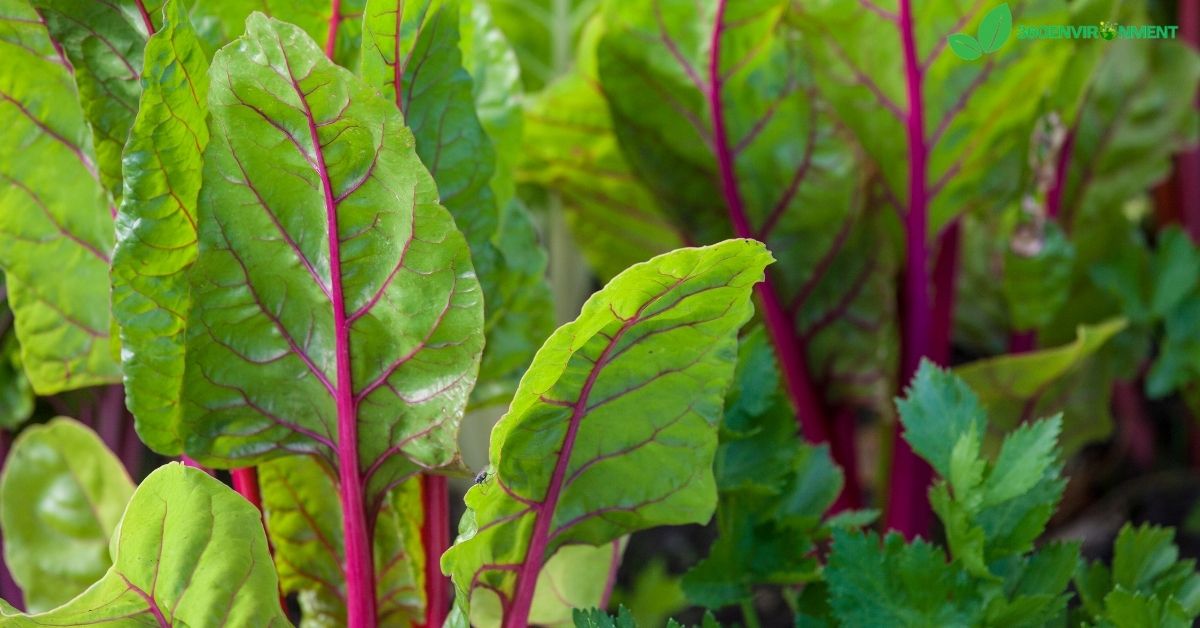Mangold chard, commonly referred to simply as chard, is a vibrant leafy green vegetable with a wide range of environmental benefits. Known scientifically as Beta vulgaris subsp. vulgaris, mangold chard belongs to the same family as beets and is renowned for its resilience, nutritional value, and adaptability to different climates and soil conditions. This article will explore the environmental significance of mangold chard, its role in sustainable agriculture, and its broader ecological implications in combating climate change, enhancing soil health, and promoting biodiversity.
1. Introduction to Mangold Chard
Mangold chard, also known as Swiss chard, perpetual spinach, or silverbeet, is a nutrient-rich, leafy vegetable cultivated across the world. It has been part of traditional diets for centuries, prized for its ability to grow in diverse environments and its ability to thrive even in poor soils.
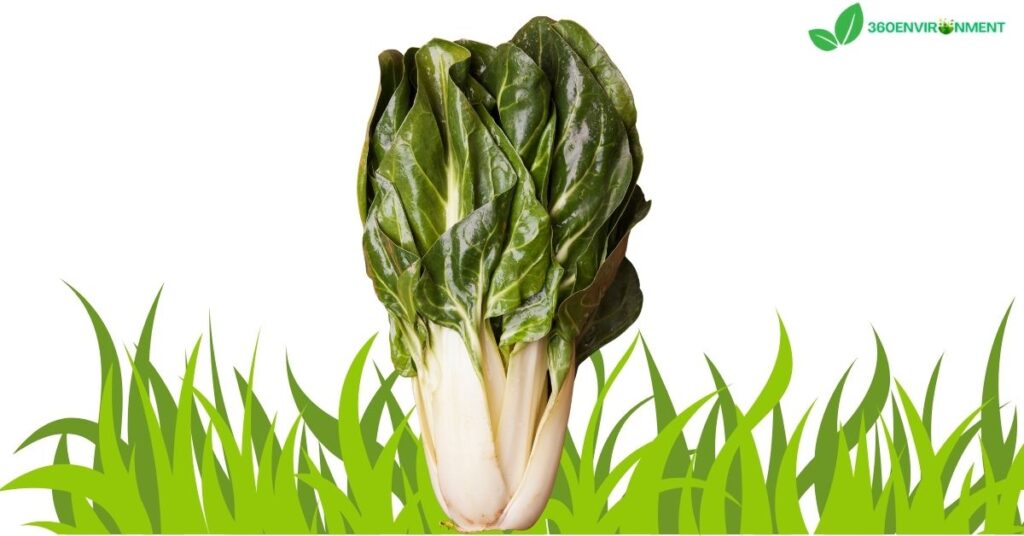
1.1. Taxonomy and Botanical Description
- Scientific Name: Beta vulgaris subsp. vulgaris
- Family: Amaranthaceae (formerly Chenopodiaceae)
- Common Names: Mangold chard, Swiss chard, silverbeet, spinach beet
- Habitat: Mediterranean climates, temperate regions, and cooler tropical areas
Mangold chard is characterized by its large, dark green leaves and colorful stalks, which can range from white and yellow to red, pink, and orange. These vibrant colors are not just visually striking but are also indicative of the plant’s rich nutrient content, including vitamins A, C, and K, as well as minerals like magnesium, potassium, and iron.
1.2. Origins and Historical Significance
Mangold chard is believed to have originated in the Mediterranean region, where it has been grown for thousands of years. Its name “Swiss chard” is a misnomer; the plant has no particular connection to Switzerland but was named to differentiate it from French varieties. Chard has played a significant role in both culinary traditions and agriculture, known for its ability to grow in challenging conditions and its versatility in cooking.
2. Environmental Benefits of Mangold Chard
Mangold chard is not only a valuable food crop but also an important player in sustainable agriculture and environmental conservation. From improving soil health to supporting biodiversity, chard contributes to various aspects of environmental sustainability.
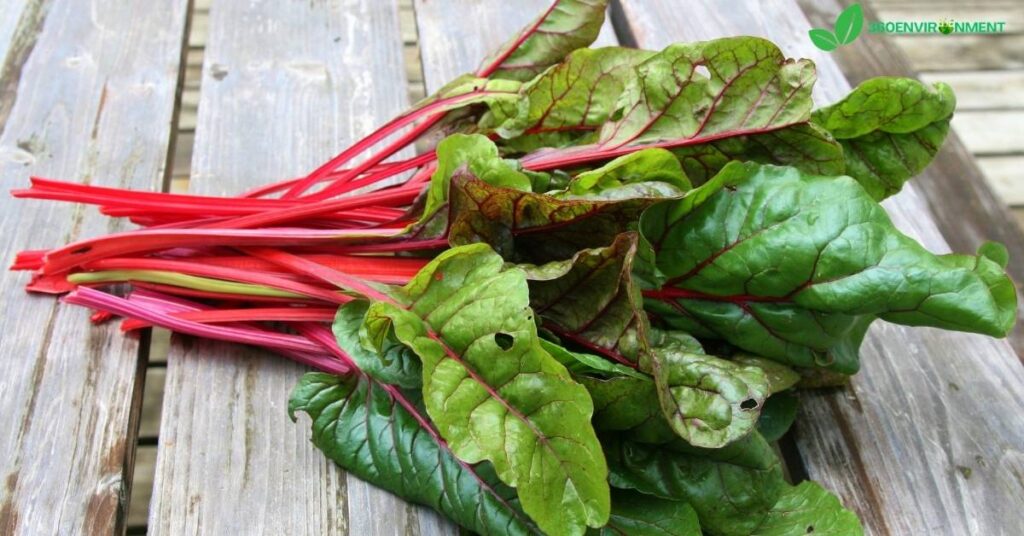
2.1. Soil Health and Erosion Prevention
One of the critical environmental benefits of mangold chard lies in its ability to enhance soil health. As a hardy, deep-rooted plant, chard helps prevent soil erosion by stabilizing the soil with its roots. This is particularly important in areas with loose or sandy soils, where erosion can lead to the loss of valuable topsoil.
2.1.1. Contribution to Soil Fertility
Mangold chard can grow in poor soils, but it also plays a role in enriching the soil over time. Like other leafy greens, chard adds organic matter to the soil when its leaves fall or are tilled back into the earth after harvest. This organic matter improves soil structure, moisture retention, and nutrient content, creating a healthier environment for future crops.
2.1.2. Crop Rotation and Pest Management
In organic farming, mangold chard is often used in crop rotation schemes to prevent soil depletion and manage pests naturally. By alternating chard with other crops, farmers can break pest cycles and reduce the need for chemical pesticides. Chard’s natural resilience to pests and diseases further reduces the environmental impact of farming by minimizing the need for harmful chemical inputs.
2.2. Water Efficiency and Drought Tolerance
Mangold chard is relatively water-efficient, making it a valuable crop in regions where water resources are scarce. Its deep root system allows it to access water from deeper in the soil, helping it survive in drought-prone areas. This characteristic not only makes chard a reliable crop in arid environments but also reduces the need for irrigation, and conserving water in agricultural practices.
2.2.1. Drought Resilience
Chard’s ability to tolerate drought conditions is becoming increasingly important as climate change leads to more frequent and severe droughts in many regions. This drought resilience positions chard as a sustainable crop option in water-scarce areas, offering farmers a reliable source of food and income even in challenging growing seasons.
2.3. Carbon Sequestration and Climate Change Mitigation
Plants play a crucial role in capturing carbon dioxide from the atmosphere and storing it in the soil, and mangold chard is no exception. By photosynthesizing and transferring carbon to its root system and surrounding soil, chard contributes to carbon sequestration, a process that helps mitigate climate change by reducing greenhouse gas levels in the atmosphere.
2.3.1. Role in Agroecology and Carbon Farming
Mangold chard is well-suited for integration into agroecological farming systems, which aim to work in harmony with natural ecosystems to reduce carbon emissions and enhance biodiversity. In particular, chard’s ability to thrive in multi-cropping systems and its compatibility with low-input farming techniques make it a key component of carbon farming strategies, which seek to maximize the carbon storage capacity of agricultural land.
3. Mangold Chard’s Role in Biodiversity
Biodiversity is critical to maintaining healthy ecosystems, and mangold chard supports biodiversity in multiple ways, from providing habitats for beneficial insects to contributing to the genetic diversity of cultivated crops.
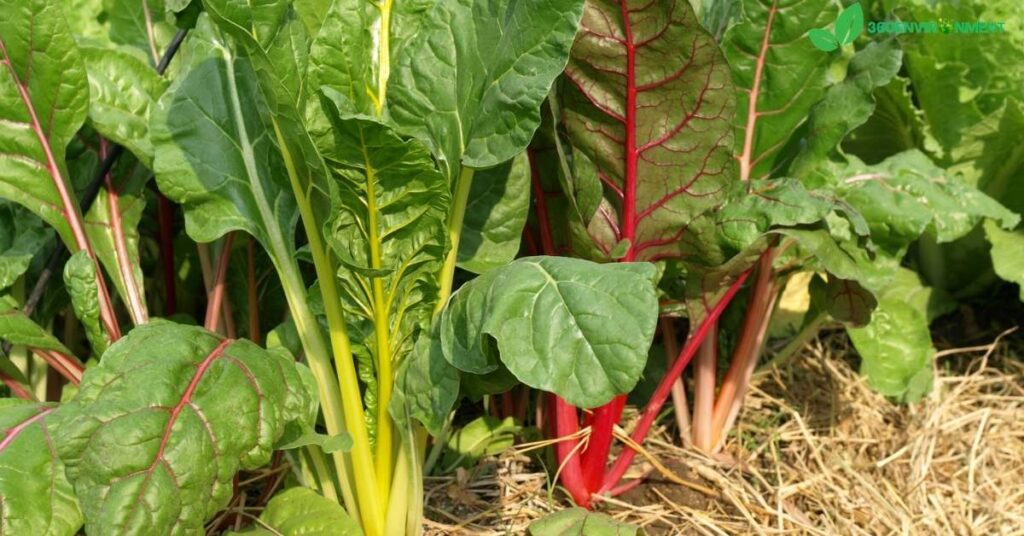
3.1. Supporting Pollinators and Beneficial Insects
While chard is not typically grown for its flowers, when allowed to bolt (go to seed), it produces small, inconspicuous flowers that attract a variety of pollinators, including bees, butterflies, and other beneficial insects. These pollinators, in turn, play a critical role in maintaining biodiversity and supporting the health of agricultural systems.
3.1.1. Attracting Predatory Insects
In addition to supporting pollinators, mangold chard can attract predatory insects such as ladybugs and lacewings, which help control pest populations. By providing a habitat for these beneficial insects, chard contributes to natural pest control and reduces the need for synthetic pesticides, thus promoting a healthier, more sustainable agricultural environment.
3.2. Genetic Diversity and Crop Resilience
Chard is a member of the beet family, and its genetic diversity is a valuable asset in crop breeding programs. As climate change continues to alter growing conditions worldwide, the genetic resilience of crops like chard is essential for developing new varieties that can withstand environmental stressors, such as drought, heat, and disease.
3.2.1. Importance in Plant Breeding
The genetic diversity of mangold chard makes it an important plant for breeding programs aimed at improving crop resilience. Chard’s resistance to certain diseases and pests, along with its adaptability to various climates, makes it a valuable candidate for cross-breeding with other crops to enhance their resilience to changing environmental conditions.
4. Sustainable Farming Practices Involving Mangold Chard
Sustainable farming practices are essential for protecting the environment, and mangold chard is often at the center of these efforts due to its adaptability and ecological benefits.
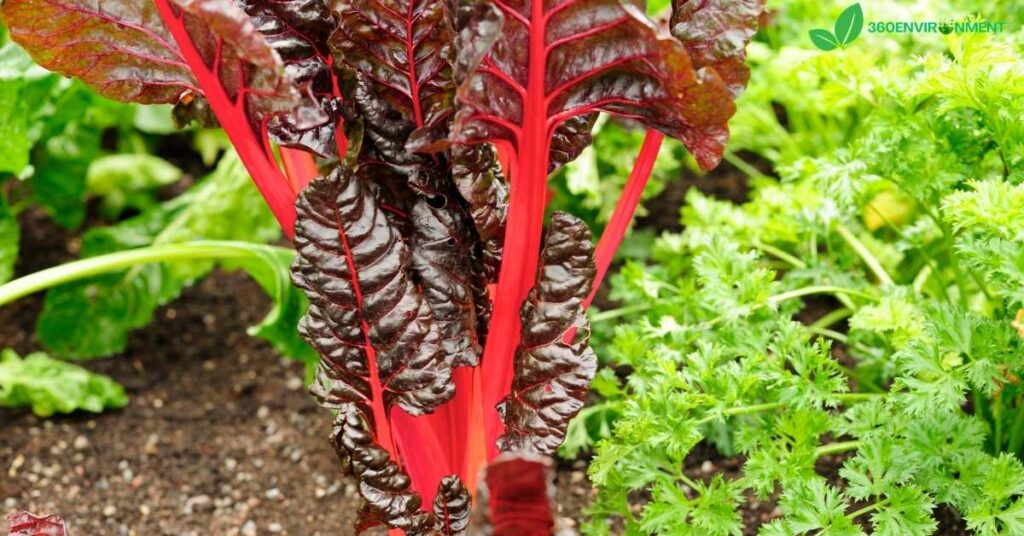
4.1. Organic Farming and Permaculture Systems
Mangold chard is a staple in organic farming systems because it requires minimal inputs, such as fertilizers or pesticides, to thrive. Its natural resistance to pests and diseases, coupled with its ability to improve soil health, makes it an ideal crop for organic farmers who aim to minimize their environmental footprint.
4.1.1. Use in Permaculture
Permaculture, a sustainable farming practice that emphasizes the creation of self-sufficient ecosystems, often includes mangold chard as part of its planting schemes. In permaculture gardens, chard is valued for its perennial nature, ability to provide a continuous food source, and its role in enhancing soil fertility. Its low-maintenance growth and adaptability make it a perfect fit for permaculture systems that aim to mimic natural ecosystems.
4.2. Companion Planting and Agroforestry
Mangold chard also fits well into companion planting systems, where different crops are grown together to benefit each other. Chard is known to grow well alongside beans, brassicas (such as cabbage and broccoli), and aromatic herbs like garlic and onions. In agroforestry systems, where trees and crops are grown together, chard’s deep roots and ability to tolerate shade make it a valuable understory crop.
4.2.1. Nitrogen Fixation and Soil Improvement
Although mangold chard is not a nitrogen-fixing plant, when planted alongside legumes that fix nitrogen, it benefits from the added nitrogen in the soil. This symbiotic relationship improves soil fertility, reducing the need for synthetic fertilizers and promoting a more sustainable, closed-loop agricultural system.
5. Mangold Chard and Climate Resilience
As climate change continues to impact global agriculture, crops like mangold chard offer hope for building more resilient food systems. Its adaptability to extreme weather conditions, such as drought and fluctuating temperatures, makes it a valuable crop in regions vulnerable to climate instability.

5.1. Resilience in the Face of Climate Change
Mangold chard’s ability to grow in a variety of climates makes it an essential crop in the face of climate change. Whether grown in cooler temperate regions or in areas with hot, dry summers, chard’s flexibility allows it to thrive where other crops might fail. This resilience makes it an important crop for food security, especially in regions that are already experiencing the effects of climate change.
5.1.1. Heat and Cold Tolerance
Chard is notable for its ability to withstand both cold and hot temperatures. It can grow through mild frosts and continue producing leaves even through warm summer months, making it a versatile crop in areas with extreme temperature variations. This tolerance to a wide range of temperatures means that mangold chard can provide a consistent food supply throughout the year in many climates, making it a valuable crop in both temperate and warmer regions affected by climate change.
5.2. Role in Ensuring Food Security
As climate change exacerbates food insecurity in many parts of the world, crops like mangold chard are becoming increasingly important. Its adaptability to a range of growing conditions means that it can be grown in regions experiencing droughts, erratic rainfall, and soil degradation. For smallholder farmers in vulnerable regions, cultivating resilient crops like mangold chard can help ensure a stable food supply, even when other crops may fail.
5.2.1. Nutritional Benefits in Food Security
Beyond its environmental resilience, mangold chard is a nutritional powerhouse. It is rich in vitamins A, C, and K, as well as essential minerals like magnesium, potassium, and iron. In regions where malnutrition is a concern, the nutritional profile of chard can help address vitamin and mineral deficiencies. By incorporating chard into diets, communities can improve food security while simultaneously promoting better health outcomes.
6. Ecological Impacts of Mangold Chard Cultivation
The cultivation of mangold chard extends beyond its immediate benefits to farmers and consumers. The plant also has a number of positive ecological impacts, from reducing the need for chemical inputs to supporting biodiversity and promoting sustainable land use.

6.1. Reduction in Chemical Inputs
One of the key ecological benefits of growing mangold chard is its reduced reliance on chemical fertilizers and pesticides. As a hardy plant with natural resistance to many common pests and diseases, chard can often be grown without the need for harmful chemicals. This has significant benefits for the environment, as it reduces the risk of chemical runoff into waterways, which can lead to pollution and harm aquatic ecosystems.
6.1.1. Lowering Pesticide Use
Mangold chard’s natural resistance to pests, such as aphids and leaf miners, means that farmers can use fewer chemical pesticides when growing it. This is particularly important in areas where pesticide use has led to environmental degradation, including the loss of biodiversity and contamination of soil and water sources. By reducing the need for pesticides, mangold chard promotes healthier ecosystems and contributes to the sustainability of agricultural practices.
6.2. Supporting Ecosystem Services
The cultivation of mangold chard also supports various ecosystem services, such as pollination, soil formation, and water regulation. As a low-maintenance crop, it fits well into agricultural systems that aim to enhance ecosystem services rather than degrade them.
6.2.1. Enhancing Soil Structure and Health
Chard’s ability to improve soil structure by adding organic matter through its fallen leaves and root systems helps maintain healthy soils. By increasing the organic content of the soil, chard also promotes water retention, reducing the need for irrigation and helping to prevent soil degradation. This makes mangold chard a valuable crop in regenerative agriculture systems that aim to rebuild soil health and increase the sustainability of farming practices.
6.3. Impact on Pollinator Populations
Though chard is grown primarily for its leaves, when allowed to flower, it can attract pollinators such as bees and butterflies. In agricultural systems that include flowering plants, mangold chard contributes to the overall health of pollinator populations. This is especially important in areas where pollinators are under threat from habitat loss and pesticide use.
6.3.1. Role in Pollinator-Friendly Agriculture
Incorporating mangold chard into pollinator-friendly agricultural systems can provide crucial resources for pollinators, particularly in the early or late parts of the growing season when other food sources may be scarce. By supporting pollinator populations, chard contributes to the overall health of agricultural ecosystems, ensuring that other crops reliant on pollination, such as fruits and vegetables, can thrive.
7. Challenges and Opportunities in Mangold Chard Cultivation
While mangold chard is a versatile and environmentally beneficial crop, there are challenges associated with its cultivation, particularly in regions facing extreme environmental conditions or socio-economic barriers. However, there are also significant opportunities to expand its use in sustainable agriculture and food systems.
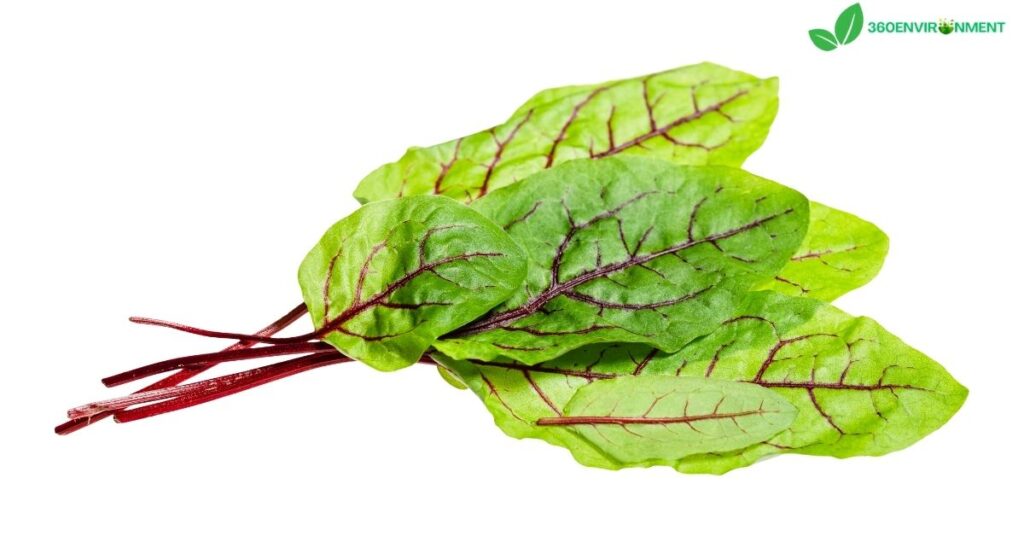
7.1. Challenges in Global Cultivation
Despite its adaptability, mangold chard is not immune to the challenges posed by climate change, soil degradation, and water scarcity. In regions where soils have been severely degraded by overuse or where water resources are limited, even resilient crops like chard can struggle.
7.1.1. Soil Degradation and Nutrient Deficiency
Soil degradation, particularly in regions with intensive agricultural practices, poses a threat to the cultivation of mangold chard. Nutrient-depleted soils may not provide adequate support for even the hardiest of crops, and farmers may need to invest in soil amendments or adopt regenerative practices to improve soil health.
7.1.2. Water Scarcity
While chard is relatively drought-tolerant, extended periods of water scarcity can limit its growth and productivity. In areas where climate change is leading to more frequent and severe droughts, water management strategies will be crucial to ensuring the success of chard cultivation. This may involve the adoption of efficient irrigation systems, rainwater harvesting, or the selection of more drought-tolerant varieties of chard.
7.2. Opportunities for Sustainable Agriculture
On the other hand, mangold chard presents numerous opportunities for sustainable agriculture, particularly in regions seeking to build climate resilience and promote food security.
7.2.1. Expansion in Agroecological Systems
As more farmers adopt agroecological practices that prioritize sustainability and ecosystem health, mangold chard is likely to play an increasing role in these systems. Its ability to thrive in diverse conditions and its contributions to soil health and biodiversity make it an ideal crop for inclusion in agroecological systems that aim to balance productivity with environmental stewardship.
7.2.2. Role in Urban Agriculture
Mangold chard is also well-suited to urban agriculture due to its relatively compact growth and ability to produce high yields in small spaces. In cities where access to fresh produce may be limited, growing chard in community gardens, rooftop farms, or even containers can help address food security issues while contributing to local environmental sustainability.
8. Conclusion
Mangold chard is a powerful symbol of resilience and sustainability in agriculture. From its ability to improve soil health and support biodiversity to its role in reducing chemical inputs and mitigating climate change, chard is an important crop for promoting environmentally responsible farming practices.
As the world faces increasing environmental challenges, crops like mangold chard offer valuable solutions for building more resilient food systems. Its adaptability to diverse climates, low water requirements, and ability to thrive in marginal soils make it an important tool in the fight against climate change and food insecurity.
By incorporating mangold chard into sustainable agriculture systems, farmers and communities can contribute to the protection of the environment while ensuring access to nutritious, locally grown food. As we look to the future, the cultivation of environmentally beneficial crops like mangold chard will be essential for creating a more sustainable and resilient world.
9. FAQs About Mangold Chard
To further understand the importance and role of mangold chard in environmental sustainability, here are some frequently asked questions:
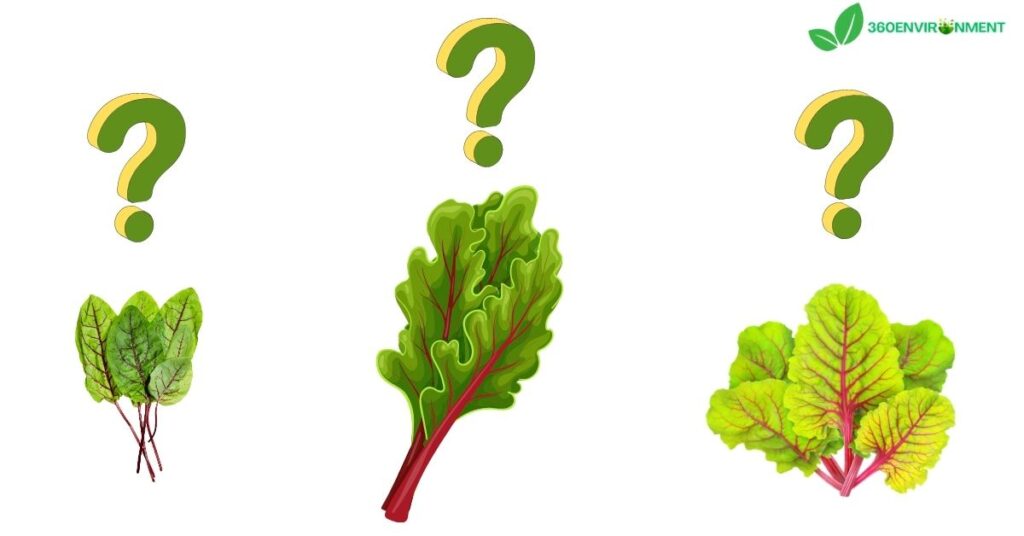
9.1. What is the difference between mangold chard and other types of chard?
Mangold chard refers to the same species as Swiss chard and silverbeet. The different names are often used regionally, but they all refer to Beta vulgaris.
9.2. How does mangold chard help in sustainable farming?
Mangold chard improves soil health, reduces the need for chemical inputs, and supports biodiversity, making it an ideal crop for sustainable farming practices.
9.3. Can mangold chard be grown in drought-prone areas?
Yes, mangold chard is relatively drought-tolerant due to its deep root system, making it suitable for regions with water scarcity.
9.4. Is mangold chard beneficial for pollinators?
While not grown for its flowers, when allowed to bloom, mangold chard attracts pollinators like bees and butterflies, supporting pollinator populations.
9.5. What makes mangold chard a good candidate for urban agriculture?
Mangold chard is compact, high-yielding, and adaptable to container gardening, making it a suitable crop for urban farming initiatives.
9.6. How does mangold chard contribute to food security?
Mangold chard is a nutritious, fast-growing crop that can thrive in challenging environments, providing a reliable food source in regions facing food insecurity.
In conclusion, mangold chard represents an essential intersection between food security, environmental sustainability, and climate resilience. Its ability to thrive in diverse conditions and contribute to the health of ecosystems makes it a valuable asset in building a sustainable future for agriculture.
Read More: Wildflower with a Royal Name: Nature’s Regal Jewel

